NorthEast Radio Watch 3/31/2025: Jim Quinn Signs Off
In this week’s issue… Remembering Pittsburgh's Quinn - Seven Mountains enters Harrisburg - My launches new brands - Ryan out at B101 - More cuts at Radio Vermont - Another AM deleted
By SCOTT FYBUSH
For the nineteenth year running, we’re back once again at year’s end to look at the stories, transactions and most of all the people who made broadcasting history in our region over the last twelve months.
This year, we did it just a little differently: instead of one or two long Year in Review columns, we orignially presented Year in Review 2012 in daily installments through New Year’s Eve – but for archival purposes, we’ve now put all those pieces together right here on one page, starting with our countdown of the top stories of the year. Think of one we missed? Drop us a line in the comments section…
Error, group does not exist! Check your syntax! (ID: 20)
[private]
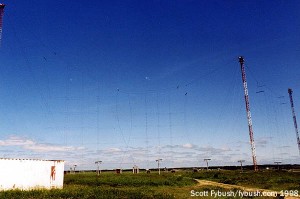
For seven decades, Canada spoke to the world with the powerful voice of its shortwave transmitter at Sackville, New Brunswick. Perched in marshland on the edge of the continent, the Sackville site provided excellent propagation paths to much of North America, Europe and beyond.
But with the rise of the internet, Radio Canada International became a potent target for budget cutters, and it could only fend off the cuts for so long. An April round of cuts to the CBC finally wiped out the last of the federal funding that kept RCI alive, setting in motion a shutdown process that culminated with the June 24 end of RCI’s own broadcasts from Sackville. Reciprocal agreements with other international broadcasters kept Sackville on the air with a limited schedule until October, when the last of the international shortwave relays from the Tantramar Marsh fell silent.
That still left one shortwave signal from Sackville: the CBC’s Northern Quebec service continued for several more months while new FM relays were built in remote villages that had depended on the Sackville broadcasts.
The CBC attempted to sell the Sackville site, towers, transmitters and all, but was unable to find a buyer; at last report, the towers and antennas were being dismantled and plans were being made to return the site to nature.

There were few stories in 2012 as bizarre as the saga of the little AM station between Utica and Albany that was built after its construction permit expired. For anyone who follows FCC legal actions, that sounds like an automatic recipe for a big fine and no license ever being issued – but the case of WKAJ (1120) in St. Johnsville, New York seems to have turned out rather differently.
At the end of 2011, it appeared WKAJ was dead: its construction permit had expired in mid-December without towers being erected or a signal being put on the air. By itself, that’s not terribly unusual these days – plenty of marginal AM facilities receive construction permits but never get built once their permittees realize how much money they’re about to pour into building an expensive transmitter site with only a questionable chance of profitability. But WKAJ was different: after its CP had expired, the reports started coming in that the towers were being built and the station was planning to get on the air.
The FCC’s initial response was just what we’d have expected: even with the four-tower site complete, transmitter and phasor in place and everything ready to sign on, the commission refused to issue a license for WKAJ. With hundreds of thousands of dollars already invested and a pretty good explanation for the delay – the storms that ravaged central New York in late 2011 had hindered access to the site on Route 5 – permittee Cranesville Block Company wasn’t about to give up. It first enlisted the area’s congressional representatives, who petitioned the FCC to no effect. Then it brought in the big guns: by August, Cranesville had persuaded U.S. senator Chuck Schumer to make an inquiry with the Commission. That time, it appeared to have worked: the FCC asked Cranesville for more evidence, and by October the WKAJ license application had been redesignated as “accepted for filing,” which seems to mean that sometime soon, WKAJ’s 10 kilowatt day signal (and 400 watts at night) may light up the radio dial in the Mohawk Valley after all.
(Cranesville appears to have learned from this expensive lesson: its other construction permit, for WYVS on 96.5 up in the Adirondack hamlet of Speculator, was built and licensed very speedily in the fall of 2012.)
In TV markets big and small, 2012 was a year for saying farewell to veteran faces behind the anchor desk. In New York City, Sue Simmons drew national attention when her 32-year run at WNBC (Channel 4) came to a close in June, evidently not entirely by Simmons’ choice. (She told New York newspapers that she hoped to be back on the air somewhere else soon, but that hadn’t happened by year’s end.) Across town, Ernie Anastos’ shifts at Fox’s WNYW (Channel 5) were cut back, leaving him only at the 5 PM anchor desk.

In Syracuse, keen observers noted that 34-year WSTM (Channel 3) veteran Jackie Robinson was missing from the NBC affiliate’s State Fair coverage – and lead anchors are never, ever missing from State Fair coverage in Syracuse. Once the fair had closed, WSTM quickly announced that Robinson would be leaving in early September, and she was gone within days, with an emotional last-day sendoff.
(Robinson and Simmons were both in the pioneering wave of African-American female anchors in the 1970s; the industry also lost two of their male counterparts for good this year, as WABC-TV’s Gil Noble and Boston’s Walt Sanders died within days of each other in April.)
Rochester’s Rich Funke started in radio, quickly moved to TV sports, and then made a late-career shift to the news desk at WHEC-TV (Channel 10), earning a reputation all along the way as a true class act. After 44 years in the business, 38 of them at WHEC, Funke said his farewell to viewers at the end of December.
Down the road in Utica, WKTV (Channel 2) said goodbye to Bill Worden in November. After 35 years at the station and nearly 50 in broadcasting, Worden’s off pursuing a new career as a drummer, traveling with the Mark Bolos Band.
And in Boston, WBZ-TV (Channel 4) anchor Jack Williams is still being seen at 6 on weeknights alongside Lisa Hughes, but the 37-year station veteran stepped down from his 11 PM anchor chair to spend more time with his family. Down the road at WCVB-TV (Channel 5), the last remaining member of the original 1972 on-air team departed at year’s end: Dr. Timothy Johnson was one of the nation’s first local TV medical reporters, and he blazed a trail that took him to national fame on ABC as well.
Error, group does not exist! Check your syntax! (ID: 17)
The rush to radio consolidation in the 1990s gave Clear Channel one of the most commanding clusters in any market with its portfolio of five full-power FM signals in New York City. But while Clear dominated the music landscape with stations such as Z100 and Q104.3 and WLTW, the nation’s biggest broadcast group lacked an AM outlet in market number one to go along with its powerful AMs such as KFI in Los Angeles and WLW in Cincinnati.
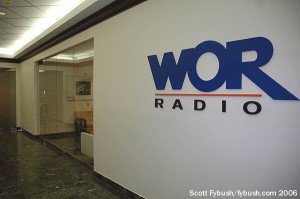
For many years, that was no big deal: even as Clear Channel built up a national talk lineup by way of its Premiere Radio Networks subsidiary, it was reasonably well assured that the most prominent Premiere hosts (by which we mostly mean Rush Limbaugh) would have no problem being cleared in New York on other owners’ stations – most notably WABC (770), which was where Rush began his rise to national prominence all those years ago. Then came WABC’s sale to Cumulus and the combination of the former Citadel and Cumulus syndication efforts into one big Cumulus push for talk dominance…which in turn meant that at some point soon, even if if hasn’t come to pass yet, that Rush and other Premiere hosts may no longer have a guaranteed spot on WABC and some of its big Cumulus sister stations such as WLS in Chicago and WBAP in Dallas/Fort Worth.
And that in turn explains why Clear Channel, despite making few if any station acquisitions in recent years, was willing to open up its wallet for a big-signal AM of its own in New York. WOR (710) had been off the market for years; indeed, longtime owner Rick Buckley made it a point of pride to boast about the substantial offers he’d turned down for his standalone AM at the height of station values. There was surely a time when WOR might have fetched $100 million or more – but by the time Buckley’s death in late 2011 put WOR on the market, the overall slump in station values and the particular decline of AM values made WOR’s “50-kilowatt smile” a bargain for Clear Channel at $30 million.
Clear Channel then had to fend off a challenge from Connoisseur Media over its failure thus far to divest Long Island’s WALK AM/FM (which compete with Connoisseur’s own Long Island cluster), leading to a delay in closing that finally put WOR in Clear Channel’s hands just a week before Christmas. That made for some uncomfortable timing when the new owners didn’t hire much of WOR’s existing staff from the Buckley years, including the entire newsroom and several prominent talk hosts, Dr. Joy Browne and former governor David Paterson among them.
The full impact of Clear Channel’s AM acquisition won’t really sink in until 2013. That’s when it’s widely expected that much of the Premiere lineup – including, yes, Rush – will move down the dial from 770 to 710. It’s also likely that WOR itself will move uptown, leaving the 111 Broadway studios it’s occupied for just a few years and relocating to Clear Channel’s facility at 32 Avenue of the Americas. Will the reshuffling of the New York talk landscape be one of next year’s biggest stories? Bet on it.
If Harold Camping had been right, our “2012 in Review” would be an awfully brief piece of work, what with the world having ceased to exist in 2011 and all. (We even waited to start writing until December 22, just in case Camping was wrong but the Mayans weren’t.) But the world, of course, stubbornly continued to be there throughout 2012, and that meant some big headaches for the bookkeepers at Family Stations. As 2012 dawned, it appeared at first that balancing the books after Family’s massive spending on its end-of-the-world ad campaign would cost Family its FM presence in Philadelphia and Washington-Baltimore, but not in the New York City market. Family’s announced sale of WKDN-FM (106.9 Philadelphia) closed during early 2012, with new owner Merlin Media relaunching the signal as talker “IQ106.9” WWIQ in May. (On the strength of Rush Limbaugh’s move from CBS Radio’s WPHT to WWIQ, the new Merlin talker ended the year firmly in the top 10 of the Philadelphia ratings; late in the year, Family returned to Philadelphia by buying the former WPEN 950 from Greater Media.)
 By then, Family was on its way off the New York FM dial after all. Early in 2012, Family quietly converted WFME (94.7 Newark NJ) from noncommercial to commercial status, setting the stage for a possible sale. It wasn’t until mid-October, after other New York FMs had sold for much higher prices (more on that later in the Year in Review), that Family finally announced it had a deal to sell the signal that it’s operated since the mid-1960s. Sometime in 2013, WFME will change hands to Cumulus, becoming a third New York signal to go along with WABC (770) and WPLJ (95.5). The final price tag for the deal still hasn’t been determined; from a base price of $40 million for WFME’s existing New Jersey-based class B signal, it could go as much as $10 million higher if Cumulus can move 94.7 to Manhattan as a full class B. As part of the deal, Family also gets a Cumulus signal north of the city, WDVY (106.3 Mount Kisco) – and it says it’s in the market for a less-expensive AM to reach the city, similar to its Philadelphia move.
By then, Family was on its way off the New York FM dial after all. Early in 2012, Family quietly converted WFME (94.7 Newark NJ) from noncommercial to commercial status, setting the stage for a possible sale. It wasn’t until mid-October, after other New York FMs had sold for much higher prices (more on that later in the Year in Review), that Family finally announced it had a deal to sell the signal that it’s operated since the mid-1960s. Sometime in 2013, WFME will change hands to Cumulus, becoming a third New York signal to go along with WABC (770) and WPLJ (95.5). The final price tag for the deal still hasn’t been determined; from a base price of $40 million for WFME’s existing New Jersey-based class B signal, it could go as much as $10 million higher if Cumulus can move 94.7 to Manhattan as a full class B. As part of the deal, Family also gets a Cumulus signal north of the city, WDVY (106.3 Mount Kisco) – and it says it’s in the market for a less-expensive AM to reach the city, similar to its Philadelphia move.
That set the stage for what was probably the best radio conversation topic of the year: “What will Cumulus do with 94.7?” Speculation ranged all over the map, from a talk WABC-FM to alternative rock to dance to country. We still don’t know for sure what the answer will be (though it’s sounding increasingly likely it will have a twang to it); whatever it is, it’s also likely to be right back here on the list in 2013.
Once upon a time, Nassau Broadcasting was the king of the jungle in northern New England. With plenty of easy credit at his disposal, Lou Mercatanti expanded beyond his original home base in the mid-Atlantic states to create the largest group (at least by sheer number of stations) anywhere in the northeast. At its height, Nassau was everywhere from Trenton (where it owned the big signal of WPST) to Cape Cod to more than a dozen medium and small markets all over Maine, New Hampshire and Vermont.

As long ago as our 2009 Year in Review, we began chronicling the slow-motion collapse of Mercatanti’s empire, under pressure from creditors (led by Goldman Sachs) trying to recover at least some of what they’d bet on Nassau back when it seemed station values could only keep going up. It took three years for the pieces to finally fall into place, with no shortage of lawsuits along the way as Mercatanti fought to hang on to at least some of what he’d built. And in the end, the fall of Nassau was arguably good news for local broadcasters, since the pieces of the once-expansive company were spun off in large part to four smaller players.
While Mercatanti had hoped to hang on to his Trenton and Lehigh Valley stations as a slimmed-down continuation of Nassau, Goldman Sachs reclaimed them, only to sell them to Connoisseur Media (which made another big pickup as well in 2012, acquiring the last of the old Barnstable group on Long Island). On Cape Cod, the former Nassau signals became the core of a new group called “Codcomm,” helmed by veteran broadcaster John Garabedian, who built new studios and planned big technical upgrades for several of the stations.
Up north, the Nassau clusters splintered among several owners, including some newer players in Maine. The bulk of the Nassau holdings in northern New England went to New Hampshire’s Bill Binnie, who’s building his own broadcast empire centered on WBIN-TV (the former WNDS/WZMY), but ownership caps and the geographic sprawl of the stations dictated that many of them be spun off yet again. Enter Jeff Shapiro, whose old Vox group had sold many of those same stations to Nassau at the top of the market – and whose new Great Eastern group picked up stations in the Lakes Region, Keene/Brattleboro and the Upper Valley at a small fraction of those prices. (We sorted out which of those stations went where in our December 3 issue, if you missed it.) Further spinoffs put a few of the ex-Nassau signals in the hands of other solid local owners, including Ken Squier in Rutland and Bruce James up in the Northeast Kingdom, and we’ll know more in 2013 about their plans for those stations.
We’ll also know more in the new year about Binnie’s ambitious plans to use his radio and TV holdings together, as the new year brings station moves to new Binnie studios in Concord and Laconia.
Error, group does not exist! Check your syntax! (ID: 7)

Broadcasters are good at hyping impending storms, whether they merit the hype or not. But Hurricane Sandy and its aftermath was the rare storm that lived up to all the hype, and then some. The huge storm system lashed the entire Eastern Seaboard in late October, but the worst of its fury played out along the coast from New Jersey up to Connecticut, where it inflicted the most intense damage on broadcast infrastructure the region had seen since the hurricanes of 1954 and 1938.
Much of the New York City AM dial was silenced by the storm, which inundated several transmitter sites in the New Jersey Meadowlands. WLIB (1190) and the shared site of WMCA (570)/WNYC (820) were especially hard-hit, losing their transmitters and transmission lines to the flooding. On Long Island, the transmitter at WGBB (1240 Freeport) was also wiped out by flooding.
While only one tower was damaged – the center tower at WRCR (1300 Spring Valley), which was partially toppled by the storm’s high winds – Sandy’s flooding wiped out power lines all over the area, silencing signals everywhere from Rhode Island to Atlantic City. A handful of stations suffered extensive outages, including several Atlantic City AMs and Staten Island college station WSIA that weren’t restored until well into December.
And then there was the studio flooding: with most of New York’s radio stations having moved from midtown Manhattan to the lower rents below Canal Street, many of their studios and offices suffered through a week without power, phones or transit access. That made the work of so many radio folks all the more remarkable as they tried their best to keep the city and region informed through the crisis – and showed vividly, once again, the importance of good disaster planning in our industry.
 Sure, there’s been a phenomenal amount of consolidation in U.S. media in the last couple of decades – but the Comcasts and Clear Channels of the world have nothing on what’s been happening north of the border. In Canada, companies such as Rogers, Shaw and Quebecor have swallowed up everything from phone companies to TV networks to cable systems to newspapers. In March, the biggest of the consolidators, Bell, made a play to grow bigger yet. It proposed a C$3.38 billion takeover of Astral Media, the Quebec-based conglomerate that dominates the cable programming landscape in Francophone Canada and controls 84 radio stations across the country.
Sure, there’s been a phenomenal amount of consolidation in U.S. media in the last couple of decades – but the Comcasts and Clear Channels of the world have nothing on what’s been happening north of the border. In Canada, companies such as Rogers, Shaw and Quebecor have swallowed up everything from phone companies to TV networks to cable systems to newspapers. In March, the biggest of the consolidators, Bell, made a play to grow bigger yet. It proposed a C$3.38 billion takeover of Astral Media, the Quebec-based conglomerate that dominates the cable programming landscape in Francophone Canada and controls 84 radio stations across the country.
Had it been approved, and had Bell been allowed to keep all of Astral’s stations, the deal would have taken Bell from 31% of national radio listening (via the former CHUM Group stations it already owns) to 45%, and it would have given Bell a huge French-language cable network portfolio for its pay-TV service.
Instead, the Bell/Astral deal provoked some intense backlash, egged on in no small part by an aggressive campaign against the merger led by rival Quebecor. The CRTC received more than 10,000 interventions, most of them opposing the deal, and in October it soundly rejected Bell’s plan, writing that “(t)he proposed transaction would not only remove the last major independent, non-integrated broadcaster from the system, but transfer its undertakings to the largest vertically integrated broadcaster and telecommunications service provider in Canada.”
Bell isn’t giving up; after initially vowing to appeal the CRTC’s denial to the federal Cabinet, it promised to bring a revised version of the merger back to the CRTC early in 2013, modifying its plans to spin off some of Astral’s holdings (and a few of Bell’s) in order to make the deal more palatable to regulators.
A sideshow to the bigger Bell/Astral merger was the radio situation in Montreal, where Bell’s lone radio outlet is English-language sports station CKGM. After having just received the CRTC’s blessing to move CKGM from 990 to the more favorable 690 dial position in order to better reach the Anglo community in Montreal, Bell’s Astral proposal included a request to flip CKGM to French-language broadcasting, a move that would have allowed the merged company to retain all three of Astral’s top-rated English-language radio stations (plus its two French-language FMs) in the market. That particular change drew an outcry so big that the CRTC had to include special CKGM-specific instructions on its homepage for filing interventions, and at least for now CKGM remains very much in English on its new home at 690.
For fans of independent music on commercial radio, it was both the best and worst of years. New York’s WRXP briefly rose from the dead only to die again. In Toronto, a proposal for a new “Indie 88.1,” from Barrie-based Rock 95 Broadcasting, triumphed over more than 20 competing proposals for the FM channel vacated by the forced shutdown of community station CKLN; the new station, to be called CIND, will debut sometime in 2013. Out on Martha’s Vineyard, Aritaur Broadcasting sold the terrestrial frequency of WMVY (92.7) to Boston public broadcaster WBUR-FM, but the station’s staff ended the year fighting to keep “MVY” alive as a listener-supported online service, hoping to raise $600,000 by February 2013 to fund the new venture.
 And then there was the granddaddy of the format, Boston’s WFNX (101.7 Lynn), beloved by generations of college students since its birth three decades ago. But three decades of indie-rock heritage couldn’t overcome a changing media landscape: while the college kids of the 1980s and 1990s (guilty as charged!) gladly fought through the static to pull in WFNX’s class A signal, their 21st-century successors have plenty of other ways to hear new music. While we geezers depended on WFNX’s parent, the Boston Phoenix, to tell us who was playing where, the paper has been struggling and is no longer the cash cow that once supported the radio station.
And then there was the granddaddy of the format, Boston’s WFNX (101.7 Lynn), beloved by generations of college students since its birth three decades ago. But three decades of indie-rock heritage couldn’t overcome a changing media landscape: while the college kids of the 1980s and 1990s (guilty as charged!) gladly fought through the static to pull in WFNX’s class A signal, their 21st-century successors have plenty of other ways to hear new music. While we geezers depended on WFNX’s parent, the Boston Phoenix, to tell us who was playing where, the paper has been struggling and is no longer the cash cow that once supported the radio station.
So the only thing that was really surprising about the May 16th announcement that WFNX had been sold was the precise timing – and the buyer. In one of its two big acquisitions of 2012, Clear Channel paid Phoenix owner Steve Mindich $14.5 million for WFNX’s 101.7 signal, touching off two months of new-format speculation before the underwhelming launch of adult hits “Harbor” WHBA in July. (Much more interesting, if tangential to the WFNX saga, was Clear Channel’s surprise flip on 101.7 just before Christmas, ditching “Harbor” for dance music as “Evolution”; that was one of several curious turns on Boston FM this year, including CBS Radio’s abandonment of classic hits on WODS in favor of top-40 as “Amp” and what appears to be Greater Media’s imminent abandonment of talk on WTKK 96.9.)
Back to WFNX: the end of its three decades over the air turned out to be the launching pad for two ambitious new online services. While Mindich promised an eventual streaming resurrection of WFNX, using the music archives and branding he’d retained after selling 101.7 to Clear Channel, the Boston Globe turned out to be the more aggressive mover. The daily paper hired many of WFNX’s former staffers, including Julie Kramer, Adam 12 and Paul Driscoll, to launch its own streaming station. “RadioBDC” (for Boston-Dot-Com) made its debut August 13, beating the new streaming WFNX.com by more than two months. Can either of those services – or the new online incarnation of WMVY – win the kind of following that their terrestrial predecessors once enjoyed? We’ll be watching in 2013.
Error, group does not exist! Check your syntax! (ID: 8)
It wasn’t hard to pick the top story of 2012. The arrival first of ESPN Radio on 98.7 and then CBS Radio’s WFAN on 101.9 would have been a big deal by itself, of course; in a market where AM still had plenty of ratings and revenue strength, the shift of one of the AM dial’s most successful formats over to FM was a pretty impressive move.
What made it the unquestioned number one story for us, though, was the series of station sales and format changes that played into those two big moves – and what those changes said about the nature of big-city commercial broadcasting in 2012.
 First, the ESPN move: for a few years now, it had been no secret at all that Disney wanted an FM home for its flagship sports radio outlet. WEPN (1050 New York) had long been triply cursed – first, by an AM signal long viewed as being distinctly inferior to the market’s biggest AM guns; second, by the stigma of having been a second sports entry long after WFAN (660) had achieved incredible market dominance; and third, by the lack of a big baseball franchise to compete with WFAN’s Mets and sister station WCBS’s Yankees play-by-play. Even though WEPN had made some very savvy programming moves, blowing out nearly all of ESPN’s network daytime offerings in favor of local sports talk with hosts easily the equal of WFAN’s, the ratings continued to lag and the baseball owners refused to negotiate for a new AM home.
First, the ESPN move: for a few years now, it had been no secret at all that Disney wanted an FM home for its flagship sports radio outlet. WEPN (1050 New York) had long been triply cursed – first, by an AM signal long viewed as being distinctly inferior to the market’s biggest AM guns; second, by the stigma of having been a second sports entry long after WFAN (660) had achieved incredible market dominance; and third, by the lack of a big baseball franchise to compete with WFAN’s Mets and sister station WCBS’s Yankees play-by-play. Even though WEPN had made some very savvy programming moves, blowing out nearly all of ESPN’s network daytime offerings in favor of local sports talk with hosts easily the equal of WFAN’s, the ratings continued to lag and the baseball owners refused to negotiate for a new AM home.
While ESPN/Disney surfaced as a potential buyer every time one of New York’s FM signals came up for sale in recent years, the prize always seemed to go elsewhere: the New York Times’ WQXR (96.3) went to SBS, Emmis’ WRXP (101.9) went to Merlin, Inner City’s WBLS (107.5) went with the rest of that financially-troubled company over to YMF, and Family’s WFME (94.7 Newark) with its limited signal appeared to linger on the market without ESPN taking a bite.
And then came the surprise of April 26, when ESPN and Emmis stunned the market by announcing they’d reached a deal to put ESPN programming on a frequency that nobody had even thought was in play. While Emmis’ WRKS (98.7) had suffered a bit with the transition from diary to PPM ratings, it retained a loyal following in New York’s black community and a healthy rivalry with WBLS – which is why the real stunner wasn’t ESPN on FM but the end of competition between “Kiss” and its competitor of three decades as Emmis sold the WRKS intellectual property to YMF for $10 million.
 Emmis’ unusual deal with both WBLS and ESPN unleashed a new breed of station transaction upon the world. While YMF Broadcasting continues to own WBLS (and sister station WLIB), the former Inner City stations were able to vacate their expensive office/studio space near Grand Central and move into Emmis’ downtown studios, with Emmis providing extensive engineering and other support services. And while less of the “Kiss” DNA lived on at 107.5 than was originally hinted at when the deal was announced, some of the former WRKS specialty programming did migrate up the dial to join WBLS’ own distinctive programs.
Emmis’ unusual deal with both WBLS and ESPN unleashed a new breed of station transaction upon the world. While YMF Broadcasting continues to own WBLS (and sister station WLIB), the former Inner City stations were able to vacate their expensive office/studio space near Grand Central and move into Emmis’ downtown studios, with Emmis providing extensive engineering and other support services. And while less of the “Kiss” DNA lived on at 107.5 than was originally hinted at when the deal was announced, some of the former WRKS specialty programming did migrate up the dial to join WBLS’ own distinctive programs.
Disney, meanwhile, prefers to lease rather than to own these days, and that’s where 98.7 came in: cash-strapped Emmis assured itself of a steady stream of revenue by leasing the signal out to ESPN through 2024. ESPN, meanwhile, retained its old home at 1050 on the dial, using it to simulcast with 98.7 through the summer before repurposing it in September as the New York home of its Spanish-language ESPN Deportes Radio.
As we explained when the deal went down, “what Emmis is doing here is extracting pretty much every bit of value it can from the 98.7 license without actually selling it outright,” and that value turned out to be pretty good indeed, amounting to a total of $96 million over the next twelve years.
How do we know that was a good deal? Because six months later, when it was Merlin’s turn to unload the former Emmis 101.9 signal, that class B facility went for just $75 million – and to a player that nobody thought was buying. As all the experts (present company included) confidently explained all year, when CBS bought WLNY (Channel 55) as its second New York-market TV signal, it hit the market cap with its combination of two TV, three AM and three FM signals. So while it was clear that WFAN would eventually migrate from 660 up to the FM dial, conventional wisdom said it would happen by way of a flip of one of CBS Radio’s existing FMs.
The “Now 92.3” death watch ended October 8, when CBS announced its purchase of 101.9 from Merlin. By then, Merlin’s great “FM News” experiment had already collapsed – in July, Merlin abruptly folded the format at both WEMP in New York and WIQI in Chicago, restoring the previous WRXP calls and “new rock” format to 101.9 in what was pretty clearly a temporary move until the station could be sold and Merlin’s investors could recoup some of their money.
 And that’s how New York City started the year with no FM sports stations and ended it with two: the very savvy lawyers at CBS saw a loophole most of us missed, a quirk in the way the FCC regulates TV-radio crossownership under which WLNY, transmitting from eastern Long Island, doesn’t count at all against the TV-radio ownership cap in New York City, thus leaving room for CBS Radio to add one more FM signal at 101.9. The new WFAN-FM made its debut November 2, bringing WFAN back to FM parity with ESPN.
And that’s how New York City started the year with no FM sports stations and ended it with two: the very savvy lawyers at CBS saw a loophole most of us missed, a quirk in the way the FCC regulates TV-radio crossownership under which WLNY, transmitting from eastern Long Island, doesn’t count at all against the TV-radio ownership cap in New York City, thus leaving room for CBS Radio to add one more FM signal at 101.9. The new WFAN-FM made its debut November 2, bringing WFAN back to FM parity with ESPN.
This story, too, will unfold several new chapters in 2013, and potentially very quickly. CBS (in partnership with Cumulus’ syndication arm) will launch its new national CBS Sports Radio network on January 2. Will its New York home be the 660 frequency where WFAN has resided – or did CBS really mean it when it promised an indefinite 660/101.9 simulcast? (Our bet is that CBS Sports Radio lands on 660, which could then also become a useful in-house destination for play-by-play overflow if there’s a conflict on 101.9.)
Then comes baseball season, with the Mets and Yankees both on yet another set of one-year deals with CBS to air on WFAN and WCBS, respectively. The negotiations for the 2014 season (and potentially beyond) will be the first in which ESPN can come to the table with full signal parity with WFAN, and that means the jockeying for position between the two big sports players and two of the biggest teams in baseball ought to be epic. (ESPN has already drawn first blood, in a small way, by picking up the Mets’ Spanish-language radio rights for 2013 for ESPN Deportes Radio on 1050.)
A final observation as we close out our top 10: there’s a common thread linking several of these stories, and that’s the continuing trend away from independent ownership of the biggest facilities in the nation’s biggest media markets. While Jerry Lee’s WBEB in Philadelphia (and on a slightly smaller scale, Saul Frischling’s Steel City Media in Pittsburgh and Steven Silberberg at one edge of the Boston market) continue to fight the good fight, 2012 saw the relentless drumbeat of consolidation claim some of the last of the big standalones. The sale of WFNX dropped Boston to just four major English-language commercial radio operators, while the sales of WOR, WRXP and WFME and the effective merger of WBLS into Emmis took New York down to just five.
(What do you think of that development? Weigh in below in the comments…)
Error, group does not exist! Check your syntax! (ID: 9)
 JANUARY: Salem Communications exits Rhode Island, selling WBZS (550 Pawtucket) to Catholic broadcaster Starboard Media for $550,000. In Oneonta, New York, SUNY picks up translator W217BY (91.3) as part of its upgrade of WUOW-LP (104.7) to full power.
JANUARY: Salem Communications exits Rhode Island, selling WBZS (550 Pawtucket) to Catholic broadcaster Starboard Media for $550,000. In Oneonta, New York, SUNY picks up translator W217BY (91.3) as part of its upgrade of WUOW-LP (104.7) to full power.
FEBRUARY: Business Talk Radio Network strikes a $250,000 deal to sell WXBR (1460 Brockton MA) to Florida Haitian broadcaster Azure Media LLC. On the LPTV dial, Craig Fox sells WMBQ-LP in Brooklyn to Buenavision TV Network for $2 million.
MARCH: Connoisseur Media strikes one of the year’s biggest deals, paying $23 million for the last remaining piece of Barnstable Broadcasting. That’s the Long Island cluster that includes WHLI (1100), WKJY (98.3), WBZO (103.1) and WIGX (94.3). At the other end of the vast greater New York City area, Bud Williamson picks up WDLC (1490)/WTSX (96.7) in Port Jervis, N.Y. from Neversink Broadcasting for $300,000, pairing them with his WYNY (1450 Milford PA). In Utica, Galaxy Broadcasting picks up W256AJ (99.1) from Jon Yinger for $40,000, relaunching it as a translator of sports WTLB (1310).
In Maine,Portland CW affiliate WPXT (Channel 51) passes from New Age Media to Tyche Broadcasting and sister station WPME (Channel 35) from MPS Media to Triumph Broadcasting, for just $75,000 each.
 APRIL: In addition to the $96 million YMF/Emmis/ESPN deal that we covered as our top story of 2012, there’s just one other deal, but it’s a big one – Townsquare Media and Cumulus engineer a swap of small-market clusters. Cumulus gets Townsquare’s stations in Bloomington and Peoria, Illinois and $116 million in cash, while Townsquare picks up a big batch of smaller Cumulus markets, including Augusta-Waterville and Bangor, Maine; New Bedford, Mass. and Binghamton, N.Y.
APRIL: In addition to the $96 million YMF/Emmis/ESPN deal that we covered as our top story of 2012, there’s just one other deal, but it’s a big one – Townsquare Media and Cumulus engineer a swap of small-market clusters. Cumulus gets Townsquare’s stations in Bloomington and Peoria, Illinois and $116 million in cash, while Townsquare picks up a big batch of smaller Cumulus markets, including Augusta-Waterville and Bangor, Maine; New Bedford, Mass. and Binghamton, N.Y.
MAY: Steven Mindich’s $14.5 million sale of WFNX (101.7 Lynn) to Clear Channel makes the big headlines (including our top 10 list), but it’s not the only signal Mindich is selling. He’s also shedding WFNX simulcaster WFEX (92.1 Peterborough NH), which goes to Bill Blount for $725,000.
JUNE: A year after stepping down as head of the New York State Broadcasters Association, Joe Reilly returns to radio ownership with the $1.2 million purchase (via his new Empire Broadcasting Corp.) of Ernie Anastos’ four Albany-area stations, WUAM (900), WMVI (1160), WVKZ (1240) and WQAR (101.3). In Brockton, Mass., the other AM in town sells as well – $100,000 from Kingdom Church to Alex Langer for WMSX (1410).
 JULY: Newport Television begins its exit from the business by selling stations to two big buyers. For $412 million, Sinclair picks up a Newport portfolio around the country that includes CBS affiliate WHP-TV (Channel 21) in Harrisburg and operational rights to CW affiliate WLYH (Channel 15); for $205.5 million, another big batch of Newport stations goes to Nexstar, including Syracuse ABC affiliate WSYR-TV (Channel 9), ABC sisters WWTI (Channel 50) in Watertown and WIVT (Channel 34) in Binghamton and NBC affiliate WETM (Channel 18) in Elmira.
JULY: Newport Television begins its exit from the business by selling stations to two big buyers. For $412 million, Sinclair picks up a Newport portfolio around the country that includes CBS affiliate WHP-TV (Channel 21) in Harrisburg and operational rights to CW affiliate WLYH (Channel 15); for $205.5 million, another big batch of Newport stations goes to Nexstar, including Syracuse ABC affiliate WSYR-TV (Channel 9), ABC sisters WWTI (Channel 50) in Watertown and WIVT (Channel 34) in Binghamton and NBC affiliate WETM (Channel 18) in Elmira.
In Utica, the new “Good Guys Broadcasting” buys the former WUTQ (1550, now WUSP), as well as its FM translator and WRCK (1480 Remsen), from Ken Roser for $350,000.
On the translator front, Dick Greene’s WECK (1230 Cheektowaga) picks up W275BB (102.9) for $90,000, moving it to downtown Buffalo, while Light of Life Ministries sells W272CG (102.3 Biddeford ME) to Port Broadcasting for $75,000 to relay WWSF (1220 Sanford).
And on the network front, Boston’s WGBH acquires syndicator Public Radio International (PRI), aiming to become the same sort of national production center for radio that WGBH-TV already is for PBS.
AUGUST: Clear Channel’s $30 million purchase of WOR (710 New York) is the latest domino to fall in the complex series of Big Apple radio sales that we chronicled in our Top 10 list.
Another Newport Television sale sends Albany Fox affiliate WXXA (Channel 23) to Shield Broadcasting for $19.4 million; it will end the year being operated by ABC affiliate WTEN (Channel 10).
Cumulus begins making its antitrust-driven spinoffs in central Pennsylvania, selling WCAT (102.3 Carlisle) to Harold Swidler for $405,ooo as an FM sister to WIOO (1000 Carlisle). In the Finger Lakes, Russ Kimble sells WYLF (850 Penn Yan NY) to Jeff Pearce for $450,000.
SEPTEMBER: The month’s biggest radio deal, by far, finds Greater Media unloading WPEN (950 Philadelphia) to Family Stations for $8.5 million, returning Family to the market a year after it sold WKDN-FM (106.9 Camden NJ) to Merlin for about three times that price – and ending the AM-FM sports simulcast with WPEN-FM (97.5 Burlington NJ). Another religious broadcaster, Crawford Broadcasting, picks up WNED (970 Buffalo) from Western New York Public Broadcasting, ending the AM-FM news-talk simulcast with WBFO (88.7).
A much smaller Philadelphia-market AM sale is Alex Langer’s $262.500 deal to sell WFYL (1180 King of Prussia) to Trinity Associates Broadcasting. At the opposite corner of the state, Erie’s Inspiration Time sells WYVL (88.5 Youngsville) to Calvary Chapel of Russell for $75,000, and just up the road in Dunkirk, N.Y., Chadwick Bay Broadcasting buys W236BJ (95.1) from Family Life Ministries for $20,000 to translate WDOE (1410 Dunkirk).
 On TV, the Norris family sells WGCB (Channel 49) in the Harrisburg/Lancaster/York market to spectrum speculator NRJ for $9 million, and across the border, My Broadcasting picks up CHCD (98.9 Simcoe ON) from Radiocorp.
On TV, the Norris family sells WGCB (Channel 49) in the Harrisburg/Lancaster/York market to spectrum speculator NRJ for $9 million, and across the border, My Broadcasting picks up CHCD (98.9 Simcoe ON) from Radiocorp.
OCTOBER: The month brings the biggest radio deals of the year, by far – the $75 million sale of WRXP to CBS and the $40+ million sale of WFME to Cumulus (with part of that “plus” being Cumulus’ transfer of WDVY 106.3 Mount Kisco to Family Stations) – but it brings some smaller deals as well. Cumulus spins off its other market-capped signal in central Pennsylvania, WTPA (92.1 Palmyra), to Patrick Sickafus for $530,000, pairing that station with Sickafus’ WWSM (1510 Annville-Cleona).
Two six-figure translator sales: Four Rivers Community Broadcasting (Word-FM) pays $124,000 to Unite Ministries for W245AG (96.9 Gladwyne/Philadelphia), while freeform WFMU pays Digital Radio Broadcasting $125,000 for W219DQ (91.7 Dillyville NY).
 NOVEMBER: The month’s biggest deal finds what’s left of Nassau selling its Pennsylvania and New Jersey signals (including the mighty WPST 94.5 Trenton) to Connoisseur Media for $40 million, just a few weeks before the sales of Nassau’s northern New England stations to Bill Binnie and Great Eastern Media finally close.
NOVEMBER: The month’s biggest deal finds what’s left of Nassau selling its Pennsylvania and New Jersey signals (including the mighty WPST 94.5 Trenton) to Connoisseur Media for $40 million, just a few weeks before the sales of Nassau’s northern New England stations to Bill Binnie and Great Eastern Media finally close.
In north central Pennsylvania, Dennis Heindl’s Laurel Media pays Cary Simpson $766,047 for WKBI (1400)/WKBI-FM (93.9) in St. Mary’s, creating a triopoly with Heindl’s WDDH (97.5).
Out on Martha’s Vineyard, Aritaur Communications makes headlines with the $715,000 sale of the license of WMVY (92.7) to Boston University to become a WBUR relay – and the plan to sell off the station’s other assets to the nonprofit group trying to keep it alive as a listener-supported stream.
Smaller radio sales included Pittsburgh Public Media’s planned acquisition of Bethany College’s WVBC (88.1 Bethany WV) for $150,000, John Garabedian’s Codcomm purchase of unbuilt WKFY (98.7 East Harwich MA) from LiveAir Communications for $90,000; WSKG’s purchase of unbuilt WWSA (88.1 Greene NY) from a local Catholic church for $60,000 and Bob Bittner’s purchase of an FM translator for his WJTO (730 Bath ME), paying Light of Life Ministries $100,000 for W252BT (98.3).
On TV, Nexstar added Burlington/Plattsburgh to its growing reach in the region, buying Fox affiliate WFFF (Channel 44) from Smith Broadcasting while sister company Mission acquired ABC affiliate WVNY (Channel 22) from Lambert Broadcasting, all for a total of $17.1 million.
DECEMBER: The second round of spinoffs from the Nassau/Binnie/Great Eastern spinoffs in northern New England gets underway, starting with the $475,000 sale of WEXP (101.5 Brandon/Rutland) from the Electromagnetic Company to WDEV’s Ken Squier, doing business as Woodchuck Radio LLC.
 Newport Television’s exit from the region concludes with the sale of Rochester ABC affiliate WHAM-TV (Channel 13), which is sold in two pieces – its non-license assets go to Sinclair for $54 million, while its license goes to Deerfield Media for $6 million. The move puts Sinclair in a temporarily weird position: it’s operating one station (WHAM-TV) that’s competing with another station (Fox affiliate WUHF) that it owns but doesn’t operate. That bit of strangeness will end in mid-2013, when Sinclair is expected to pull WUHF out of its JSA with Nexstar’s CBS affiliate, WROC-TV (Channel 8) and move the Fox station in with WHAM-TV.
Newport Television’s exit from the region concludes with the sale of Rochester ABC affiliate WHAM-TV (Channel 13), which is sold in two pieces – its non-license assets go to Sinclair for $54 million, while its license goes to Deerfield Media for $6 million. The move puts Sinclair in a temporarily weird position: it’s operating one station (WHAM-TV) that’s competing with another station (Fox affiliate WUHF) that it owns but doesn’t operate. That bit of strangeness will end in mid-2013, when Sinclair is expected to pull WUHF out of its JSA with Nexstar’s CBS affiliate, WROC-TV (Channel 8) and move the Fox station in with WHAM-TV.
In eastern Pennsylvania, Lehigh Carbon Community College strikes a $705,000 deal to sell WXLV (90.3 Schnecksville) to Four Rivers Community Broadcasting.
Marshall Miles’ Tri-State Public Media (Robin Hood Radio) acquires WLHV (88.1 Annandale-on-Hudson NY) from Bard College for $17,000, a few weeks after putting the station on the air as a relay of WHDD-FM (91.9).
And north of the border, Newcap acquires the other 70.1% of CKCH (103.5 Sydney NS) that it didn’t already own from partner Barry Maxwell.
Error, group does not exist! Check your syntax! (ID: 7)
JANUARY:
The new year began with fewer format changes than usual, the most notable in Niagara Falls, where AAA “River” CFLZ (105.1) became adult hits “Ed FM” CJED, sending the CFLZ calls to sister top-40 “Z101”, the former CKEY. But it began with the promise of bigger changes to come north of the border, as the CRTC opened up applications for the 88.1 facility in Toronto vacated by the revocation of CKLN. By the time the application window closed, there would be more than 20 proposals to revive the frequency.
 South of the border, Family Stations quietly shifted WFME (94.7 Newark NJ) to commercial status, signaling that it would be up for sale later in the year. Over in Hartford, Clear Channel completed its move of WPKX (97.9 Windsor Locks) from the neighboring Springfield market on January 27, relaunching it as “ESPN 97.9” with a call change a few weeks later to WUCS. (The WPKX calls were parked on the former WGIN 930 in Rochester, New Hampshire, and the former “Kix” country format from 97.9 had already shifted to WRNX 100.9 Amherst-Springfield.)
South of the border, Family Stations quietly shifted WFME (94.7 Newark NJ) to commercial status, signaling that it would be up for sale later in the year. Over in Hartford, Clear Channel completed its move of WPKX (97.9 Windsor Locks) from the neighboring Springfield market on January 27, relaunching it as “ESPN 97.9” with a call change a few weeks later to WUCS. (The WPKX calls were parked on the former WGIN 930 in Rochester, New Hampshire, and the former “Kix” country format from 97.9 had already shifted to WRNX 100.9 Amherst-Springfield.)
Meanwhile at Clear Channel in Springfield, the veteran morning team of Dan Williams and Kim Zachary were out at WHYN-FM (Mix 93.1), later to resurface for a few months with an experimental radio-style morning show on ABC affiliate WGGB-TV 40; down the road in Worcester, Clear Channel also parted ways with Jackie Brush in mornings at WSRS (96.1).
A fire destroyed the studios of WIOO (1000 Carlisle PA), forcing the classic country station to broadcast first from its transmitter and then from a new studio location later in the year.
Towers came down at two upstate New York stations: WWLF-FM (96.7 Oswego) lost its self-supporter to a nasty winter storm, WMML (1230 Glens Falls)/WENU (1410 Glens Falls) took theirs down to replace it with a heftier structure that could also hold cellular/wireless antennas, leaving those stations silent for two months as rebuilding took longer than planned. In Buffalo, the Bills announced a move from Cumulus (WEDG/WGRF) to Entercom’s sports giant WGR, but Cumulus had news of its own, moving top-rated Shredd and Ragan from afternoons back to mornings at WEDG (103.3), reversing a move that had been made by Citadel back in the Howard Stern days.
Prominent format changes: Cumulus flipped two of the stations it acquired from Citadel: WXTL (105.9 Syracuse) from talk to active rock as “The Rebel” and WMHX (106.7 Hershey-Harrisburg) from 80s/90s “Channel 106.7” to “Z Country” WZCY-FM. In south Jersey, WFNE (106.7 North Cape May) shifted to 106.3 with an improved signal. On the AM dial, WINR (680 Binghamton NY) went from standards to oldies and WXCT (990 Southington CT) from “Radio Cantico Nuevo” Spanish religion to “Power 990” Spanish tropical. In Canada, Halifax’s CKHZ segued from “Z103.5” to a more rhythmic “Energy 103.5,” while in Charlottetown, PEI, CKQK replaced”K-Rock” with top-40 “Hot 105.5.”
New to the air: WLNF 90.5 Rapids (Lockport) NY, programmed by the local cable access channel; WLNJ (91.7 Lakehurst NJ, simulcasting WYRS 90.7 Manahawkin, on air Jan. 25.)
Gone: WPSA (98.3 Paul Smiths NY), deleted by the FCC.
FEBRUARY:
More prominent names disappeared from the airwaves: in New York, Nick Cannon cited health problems as he ended his brief radio career by departing from morning drive at WXRK (Now 92.3); in Hartford, budget cuts claimed Dan Lovallo’s afternoon talk show on WDRC (1360) and its Buckley sister stations. Down the road at WFSB (Channel 3), it was the end of the line for veteran anchor Al Terzi, but not for long; he’d reappear at Fox affiliate WTIC-TV (Channel 61) within weeks.
In Rhode Island, state funding cuts hit WSBE (Channel 36) hard, but “RI PBS” survived, changing hands later in the year from the state-run Rhode Island Public Telecommunications Authority to the community-run Rhode Island PBS Foundation. A New Hampshire alliance put classical WCNH (91.5 Bow) in the Concord studios of New Hampshire Public Radio – and on the HD2 of NHPR’s WEVO (89.1 Concord). In Buffalo, the month’s end was also the end of public radio competition: WBFO (88.7) closed down its studios at the University of Buffalo and moved in downtown with new owner WNED, merging its programming with erstwhile competitor WNED (970) for a simulcast that lasted until WNED sold the AM signal in November.
 In Pennsylvania, Clear Channel’s WLAN (1390 Lancaster) dropped oldies for a simulcast of news-talk WHP (580 Harrisburg) and Cumulus’ WJJR (93.7 Dallas/Wilkes-Barre) segued from “JR 93-7” to “Great Country.” In Maine, WAEI-FM (104.7 Belfast) dropped sports for classic hits as “B104.7,” WBAK, a sister to WABK-FM (104.3) in the Augusta market.
In Pennsylvania, Clear Channel’s WLAN (1390 Lancaster) dropped oldies for a simulcast of news-talk WHP (580 Harrisburg) and Cumulus’ WJJR (93.7 Dallas/Wilkes-Barre) segued from “JR 93-7” to “Great Country.” In Maine, WAEI-FM (104.7 Belfast) dropped sports for classic hits as “B104.7,” WBAK, a sister to WABK-FM (104.3) in the Augusta market.
New to the air: WJJF 94.9 Montauk NY/New London CT, with news/talk; WWQZ (89.5 Baptist Village/Springfield MA, Feb. 18); CKVV “Star 97.5” Kemptville ON (Feb. 27).
Gone: CFYX (93.3 Rimouski QC), 5:30 PM Feb. 29; the tower of WNHV (910 White River Junction VT, which fell silent in 2011).
MARCH:
Rush Limbaugh’s Sandra Fluke moment provoked plenty of headlines, but didn’t end up having a huge effect on his affiliate count. Of the few stations that did drop Limbaugh, two were in New England: Vox’s WBEC (1420 Pittsfield) pulled the show immediately, while WSYB (1380 Rutland) waited a few weeks before dropping Rush. (Limbaugh would switch stations in two bigger markets later in the year for unrelated reasons: in Philadelphia, Merlin’s WWIQ 106.9 picked up the show from CBS Radio’s WPHT 1210, while in Boston, Clear Channel’s folding of its talk format at WXKS 1200 sent Rush back to his longtime home at Entercom’s WRKO 680.)
Over in Albany, Clear Channel’s WPYX (106.5) parted ways with morning man Bob “Wolf” Wohlfeld; down in the Hudson Valley, Cumulus flipped WFAF (106.3 Mount Kisco) from a simulcast of AC WFAS-FM (103.9 Bronxville) to a simulcast of Danbury-market country WDBY (105.5), with new calls WDVY. Clear Channel made changes in the valley, too, replacing hot AC “Star 93.3” WBWZ with “Rock 93” and sending morning man Chris Marino packing. Clear also swapped simulcasts again up in Ellenville, putting WKIP (1450 Poughkeepsie)’s talk back on WRWD (1370, changing calls to WJIP) and moving the country simulcast of WRWD-FM (107.3 Highland) back to 99.3, flipping the FM from WKIP-FM to WRWB.
In Utica, EMF transferred WRCK (100.7) to Ken Roser, who made it the new FM home of soft AC WUTQ (1550); once the new WUTQ-FM had fully launched, Roser moved the WRCK calls to the former WADR (1480 Remsen) and sold both AMs and an FM translator on 95.5 to the new Good Guys Broadcasting, which relaunched them as sports “WUSP.” Back in Albany, Townsquare pulled off a fun stunt by launching a new HD2/translator as “Sunny 99.1” before abruptly flipping it to urban as “Hot 99.1.”
In Rhode Island, Starboard Communications launched its new Catholic WSJW (550 Pawtucket, the former WBZS) on St. Patrick’s Day.

An electrical fire in Boston’s Back Bay cut off power to the FM stations on the Prudential Tower, sending several to auxiliary sites for several days while others kept going with backup generators. Just to the south, the FCC finally caught up with high-powered pirate “Hot 97,” silencing its big signal at 87.7 on the dial.
In Maine, Port Broadcasting flipped WPHX (1220 Sanford) to full-service AC WWSF, later adding an FM translator; down East, WRMO (93.7 Milbridge) returned to the air as “93.7 the Wave” after the death of former owner Lyle Evans had silenced it.
Along the southern border of Pennsylvania, EMF flipped WKEL (98.5 Confluence) from K-Love to Air 1 with new calls WYRA; WPPT (92.1 Mercersburg) flipped from “Country Legends” to top-40 as “92.1 Now,” WNUZ.
In New York City, CBS took control of independent WLNY (Channel 55), launching new morning and 10 PM newscasts from the WCBS-TV (Channel 2) newsroom.
And in Niagara Falls, we finally learned “the rest of the story” behind those strange applications being filed for WJJL (1440): it turns out the mysterious woman making those message-board postings and FCC filings was doing so from a mental-health shelter in New York City.
New to the air: WRNM (91.7 Ellsworth ME, from Light of Life Ministries); two HD2-fed translators – top 40 “i104.3” (W282BR Erie PA, fed by Cumulus’ WXKC 99.9-HD2) and urban “Hot 99.1” (W256BU Albany, fed by Townsquare’s WQSH 105.7-HD2).
Gone: WDCD (1540 Albany, the former WPTR), if not for good than at least temporarily while Crawford seeks a profitable way to run the 50 kW signal.
APRIL:
Canadian budget cuts once again threatened the continuing existence of Radio Canada International, and this time no amount of public outcry could reverse the decision to shut down Canada’s voice to the world. The shutdown proceeded quickly, with RCI’s own broadcasts from Sackville, New Brunswick ending in June and the reciprocal international relays from the site falling silent by autumn as dismantling of the historic site got underway.
Boston engineers once again had to deal with a major technical failure, this time in the master DTV antenna in Needham that carried WBZ-TV, WCVB-TV, WSBK and WGBX. Those stations (and WGBH-TV, which used the other master antenna mounted just below) scrambled to restore temporary signals to the air (and to satellite viewers), but it would be May before the damaged antenna was removed from its 1300-foot perch and late August before the rebuilt antenna could be placed back in full service.
Family Radio signed off at WKDN-FM (106.9 Camden NJ/Philadelphia) – and new owner Merlin Media stunted first with REM’s “It’s the End of the World (As We Know It)” and then with nonstop Sean Hannity for several weeks before launching its new talker, WWIQ (IQ 106.9) on May 7. Powered by Rush Limbaugh and a fiery election season in a swing state, IQ became Merlin’s most successful spoken-word outlet and the only one to survive 2012. (Family parked the WKDN-FM calls on the former WXFR 88.3 in State College.)
 In Rochester, classic rock “Fox” WFXF (95.1) gave way to slightly more active classic rock as WQBW, “the Brew,” still with Brother Wease as its morning institution. In Syracuse, former WSYR talker Jim Reith resurfaced at public broadcaster WCNY, which had an ambitious plan to use him in a daily TV talk show, a radio show on an HD subchannel and on its website. Too ambitious? Perhaps – by year’s end, Reith was gone from the station.
In Rochester, classic rock “Fox” WFXF (95.1) gave way to slightly more active classic rock as WQBW, “the Brew,” still with Brother Wease as its morning institution. In Syracuse, former WSYR talker Jim Reith resurfaced at public broadcaster WCNY, which had an ambitious plan to use him in a daily TV talk show, a radio show on an HD subchannel and on its website. Too ambitious? Perhaps – by year’s end, Reith was gone from the station.
Down the road in Binghamton, Clear Channel segued “Star 105.7” (WMRV) from hot AC to top-40. In Utica, silent WRUY (1450) took back its original WKAL calls (and remained silent at year’s end as its new owner tried to arrange for studio space.) Brattleboro, Vermont got its community station back as WVEW-LP (107.7) opened new studios to replace the ones destroyed by fire in 2011.
In New Jersey, silenced WDDM (89.3 Hazlet) brought its class D noncommercial signal back to the air on a new frequency, 104.7, with new calls of WPDI. In Oneonta, New York, SUNY Oneonta moved its upstart public station from its original LPFM home at 104.7 to a new full-power signal at 88.5 licensed to nearby Milford. The WUOW calls migrated from 104.7 to 88.5 as well; 104.7 was briefly rechristened WUWO-LP before the license was returned to the FCC.
In Maine, WCSH (Channel 6) said farewell to veteran sports director Bruce Glasier, a fixture at the station since the 1970s.
New to the air: Catholic WTMI (88.7 Fleming/Auburn NY); WGSS (89.3 Copiague NY); WUWO (88.5 Milford NY, replacing WUWO-LP 104.7 Oneonta, which is deleted.)
MAY:
A tumultuous year in Boston talk radio began its tumult with Tom Finneran’s departure from morning drive at Entercom’s WRKO (680) after a longer run than almost anyone had expected for a disgraced politician with no radio experience. Down the road in Brockton, the longtime studios of WXBR (1460, ex-WBET) were padlocked for non-payment of rent; they’d reopen briefly, but the station’s local staff was gone before year’s end as 1460 fell silent awaiting new owners and new studios. (Coupled with the silence-pending-sale of WMSX 1410, that left Brockton with no local AM on the air at the end of 2012.)
In Rochester, Clear Channel’s ever-flipping 107.3 South Bristol rimshot ditched one of its longer-running formats, an AM sports simulcast as WHTK-FM, becoming automated oldies WODX.
Butler, Pennsylvania’s WLER (97.7, sister to WBUT 1050) flipped from “All Hitz 97-7” to “The Rock Station.”
In Ottawa, CTV’s CJOH (Channel 13) said farewell to one of the country’s longest-running local anchors, 36-year veteran Leigh Chapple.
New to the air: religious WVVC (88.1 Dolgeville NY) and WPFG (91.3 Carlisle PA, on air 10 AM May 19); Nantucket’s AAA WAZK (“97.7 ACK-FM,” on the air 5 PM May 24 with Bob Dylan’s “Hurricane.”)
JUNE:

The tumult in Boston talk continued: WBZ (1030) overnight host Steve LeVeille abruptly departed June 8, leaving a rotating series of substitutes in the wee hours through the rest of the year. Dial Global’s progressive talk lineup vanished from the lineup at WWZN (1510), a prelude to the station’s flip to NBC Sports Radio under new calls WUFC later in the year. In the public arena, WGBH (89.7) announced plans to drop much of its evening jazz programming and beef up its local talk lineup, while “Click and Clack” announced their plans to stop producing brand-new “Car Talk” material, but to continue to compile previously-recorded segments into new-ish shows.
Not enough format tumult for one city in one month? CBS Radio fixed that on June 28 with an even bigger surprise: gone was one of the city’s longest-running brands, classic hits WODS (103.3), replaced by high-energy top-40 as “AMP Radio.”
In central Pennsylvania, public station WITF (89.5 Harrisburg) displaced classical music to its HD-2, going all-talk on its main service.
In Buffalo, John Murphy left his sports director position at WIVB (Channel 4) to go to work full-time with the Buffalo Bills, not just as their lead play-by-play man on game day but also hosting a nightly talk show on the team’s new flagship, WGR (550). (WGR also launched a daily Sabres-focused talk show, which seemed like a good idea until there were no Sabres.)
North of the border, Radio-Canada applied to move CBEF in Windsor from 540 to 1550, the former home of English-language CBE; the move was quickly granted and by year’s end CBEF was temporarily simulcasting at both ends of the dial. In Quebec City, CJEC (91.9) moved from “Rythme FM” to hot AC “WKND,” billing itself as “the station with no Monday.” Elsewhere in the province, Cogeco announced plans to flip stations in Gatineau, Trois-Rivieres and Sherbrooke from CKOI hot AC relays back to the French talk formats they’d previously had as CJRC, CHLN and CHLT.
Call changes: WZZZ (1300 Fulton NY) became WOSW and soon flipped from Radio Disney to classic country; WFQR (93.5 Harwich Port) briefly became WHYA before swapping those calls with WFRQ (101.1 Mashpee), setting the stage for an eventual split of those stations’ “Frank” simulcast; WFNE (106.3 North Cape May) became WJSE, setting the stage for a flip from “Fun” oldies to modern rock on Labor Day.
New to the air: Light of Life’s WWRN (91.5 Rockport ME, 4 PM June 10); WUMB-FM relay WUMV (88.7 Milford NH); all-infomercial WACP-TV (Channel 4 Atlantic City NJ, serving Philadelphia).
Gone: local news at WZBN-LP (Channel 25) in Trenton, N.J. (June 8); Radio Canada International (June 24).
JULY:
Merlin’s FM News came to a sudden end on the morning of July 17, replaced abruptly on WEMP (101.9 New York) by a short-lived revival of the old WRXP calls and a modern rock format programmed out of Chicago while Merlin sought a buyer for the station.
 The last live programming over the air on WFNX (101.7 Lynn/Boston) came to a close July 20, ending more than 30 years of innovative radio on that frequency; four days later, Clear Channel launched its 101.7 replacement, “101.7 the Harbor” WHBA, at 4 PM on July 24.
The last live programming over the air on WFNX (101.7 Lynn/Boston) came to a close July 20, ending more than 30 years of innovative radio on that frequency; four days later, Clear Channel launched its 101.7 replacement, “101.7 the Harbor” WHBA, at 4 PM on July 24.
The July 4th weekend found three Connecticut stations moving to new studios, as WDAQ (98.3 Danbury), WLAD (800 Danbury) and WAXB (850 Ridgefield) said goodbye to Main Street after half a century, relocating to new digs on the west side of town. Over in Hartford, Al Terzi landed on a new TV home, WTIC-TV (Channel 61), while midcoast Maine said goodbye to 44-year WABK (104.3) veteran Don Brown.
In Utica, “Good Guys Broadcasting” launched its new sports/ethnic format on WUSP (1550), WRCK (1480 Remsen) and the 1550 translator on 95.5. In Elmira, a summer storm downed the venerable self-supporting tower that had carried WENY (1230) since 1939.
Another Prince Edward Island station changed formats, as CHLQ ditched “Magic 93” AC for classic rock as “Q93.”
Call changes: the Vermont highway department’s WDER-LP (98.3 Derby Line) became WAOT-LP when the former WFEX (92.1 Peterborough NH) became WDER-FM. In Halifax, Pennsylvania, just north of Harrisburg, an EMF call swap sent the calls of WLVU (88.5) down to Nashville. The old Nashville 97.1 calls, WRQQ, came to Halifax briefly before 88.5 became WKHW.
New to the air: urban WJOB-FM (93.3 Susquehanna PA/Binghamton NY), Tamil CJVF (105.9 Scarborough ON).
Gone: WBGI (1340 Connellsville PA), WASP (1130 Brownsville PA), returned to the FCC.
AUGUST:
Clear Channel had the “bombshell” category to itself this month, what with the sudden end to its ill-fated “Talk 1200” experiment at WXKS (1200 Newton/Boston) and its $30 million purchase of New York’s WOR (710). While it took until December for the FCC to clear the way for WOR to enter the Clear Channel talk fold, WXKS exited immediately, first to a brief “Gaffe 1200” and then picking up the syndicated Comedy 24/7 service with some local liners by WXKS-FM morning institution Matty Siegel. (Comedy also replaced talk on WJIP 1370 Ellenville NY, as well as replacing country on CHAM 820 Hamilton ON.)
 More big Canadian flips: CIQM (97.5 London ON) ditched “EZ Rock” for “Virgin” top-40, while CKLX (91.9 Montreal) dropped “Planete Jazz” for sharp-edged talk as “CHOI Radio X.”
More big Canadian flips: CIQM (97.5 London ON) ditched “EZ Rock” for “Virgin” top-40, while CKLX (91.9 Montreal) dropped “Planete Jazz” for sharp-edged talk as “CHOI Radio X.”
Another veteran morning man exited in Maine: Rick Foster said farewell to his morning audience on WDEA (1370 Ellsworth) after half a century.
On TV, Boston’s WGBH and New Hampshire Public TV announced a new partnership that would harmonize both stations’ schedules, taking NHPTV off cable in Massachusetts and WGBH off cable in New Hampshire and prompting protests from cross-border fans of each stations’ programming quirks (most of all, it seems, from Lawrence Welk fans in Massachusetts!)
WYOS (1360 Binghamton) lost a tower to an errant tractor in the fields around its guy wires, leaving the station at reduced night power through the rest of the year.
Format changes: WLIX-LP (94.7 Ridge NY) dropped religion for standards as “The Penthouse”; WJSE (106.3 North Cape May NJ) completed its long flip to modern rock; WDNY (1400 Dansville NY) flipped from adult standards to adult hits; WXMR (100.7 Plattsburgh West NY) flipped from leased-time “Bistro 100.7” to AC “B-100.”
Call changes and new calls: WSAH (Channel 43) in Bridgeport CT embraced its new MeTV affiliation as WZME; Joe Reilly picked up two older calls for his new acquisitions, flipping WVKZ (1240 Schenectady) to WPTR and WQAR (101.3 Stillwater) back to WJKE; new calls for new stations included WMHY 88.7 Richfield Springs NY, WYVS 96.5 Speculator NY and WQJQ 94.5 Irasburg VT.
New to the air: WTIO (88.3 Mainesburg/Mansfield PA), relaying public radio WVIA (89.9 Scranton); WRVH (89.3 Clayton), relaying public radio WRVO (89.9 Oswego).
SEPTEMBER:
ESPN Radio ended its summer-long simulcast in New York on September 7, flipping WEPN (1050) to ESPN Deportes Radio and leaving English-language ESPN only on FM.
In Albany, Townsquare feinted with a possible swap of its “Crush” hot AC on full-power WQSH (105.7) and “Hot” urban on its HD2/translator at 99.1, but instead left “Hot 99.1” alone and segued 105.7 to “Pop Crush,” one of several webcasts that found terrestrial homes in 2012.
 Up along the St. Lawrence, WEFX (100.7 Clayton/Watertown) dumped “Fox” classic rock for country as “100.7 the Eagle,” while WLYK (102.7 Cape Vincent) moved from oldies to AC as “102.7 Light Hits,” still aimed across the river at Kingston, Ontario.
Up along the St. Lawrence, WEFX (100.7 Clayton/Watertown) dumped “Fox” classic rock for country as “100.7 the Eagle,” while WLYK (102.7 Cape Vincent) moved from oldies to AC as “102.7 Light Hits,” still aimed across the river at Kingston, Ontario.
Way up the St. Lawrence, Astral moved CJAD (800), CJFM (95.9) and CHOM (97.7) from their longtime home at 1411 Fort Street to new digs at 1717 Rene-Levesque Est, shared with their Francophone sister stations.
On Long Island, Connoisseur pulled the plug on 90s-heavy “94X” at WIGX (94.3 Smithtown) at noon on Sept. 14, flipping to classic rock as “Shark” WWSK; the same day also brought the launch of Mainestream Media’s rhythmic top 40 “Hot 104.7” WHTP on what had been Nassau’s “W-Bach” WBQW (104.7 Kennebunkport).
Along the Mason-Dixon line, WICL (95.9 Williamsport MD/Chambersburg PA) flipped from classic hits to “Big Dawg” country.
On TV, the “Cool TV” music video network vanished from subchannels of Sinclair’s stations around the region; in the Boston market, the move of MeTV to subchannels on Hearst’s WCVB (Channel 5) and WMUR (Channel 9) created a void on the 62.1 channel at WMFP that was filled by Plum TV, a network catering to the upper crust.
New to the air: Family Life Network’s WCGF (89.9 Cambridge Springs/Meadville PA); Vermont Public Radio’s WVBA (88.9 Brattleboro, Sept. 24); CKGM on 690 in Montreal.
Gone: CIMI (103.7 Charlesbourg/Quebec City), deleted after being silent since 2008; CKBG (107.3 Middle Musquodoboit NS); CHRC (800 Quebec City, Sept. 30).
OCTOBER:
 The first big format change of the month came October 5, when Entercom ended its yearlong simulcast of Boston’s WEEI, leaving local sports at 93.7 FM and flipping AM 850 to fulltime ESPN Radio.
The first big format change of the month came October 5, when Entercom ended its yearlong simulcast of Boston’s WEEI, leaving local sports at 93.7 FM and flipping AM 850 to fulltime ESPN Radio.
Up the coast, Clear Channel did a double flip, taking WERZ (107.1 Exeter NH) back to its top-40 roots as “Z107” and flipping top-40 “Kiss 95.3” (WSKX York Center ME) to adult hits “Coast.” Clear Channel’s staffing cuts claimed “Doc” Garrett, longtime PD at WHEB-FM (100.3) there and WGIR-FM (101.1 Manchester), but he wasn’t out of work long, landing in an upper management job with Bill Binnie’s growing broadcast group.
In Syracuse, Galaxy sparred with Cumulus in court after the morning team of “Hunter and Josh” abruptly disappeared from Cumulus’ WAQX (95X) and turned up down the street at Galaxy’s “K-Rock” (WKRL 100.9/WKRH 106.5/WKLL 94.9). That move displaced most of K-Rock’s existing airstaff, including morning man Dex Mitchell, who’d just arrived in January, and it led to some testy legal battles that ended mostly in Galaxy’s favor: a judge ruled Hunter Scott and Josh Grosvent could take their talents to K-Rock, but the name of their show (“The Show”) and several characters from the show still belonged to Cumulus. Meanwhile, Galaxy lost one of its management stars, as VP/programming Mimi Griswold headed into retirement.
New to the air: WZXB (90.5 Bechtelsville PA), WZXN (90.1 Newburg PA), both part of Four Rivers’ “Word FM” network; CBC Radio One’s CBOB (91.9 Brockville ON); WCME (900 Brunswick ME, returning to the air at noon Oct. 16 with John Lennon’s “#9 Dream”).
Gone: WKGE (850 Johnstown PA), at least temporarily; never-built WTTT (98.7 Stratford NH)
NOVEMBER:
CBS Radio kicked the month off with a bang, putting WFAN on FM at 101.9 in New York. (A week later, it finally killed off the old WXRK calls on sister station “Now 92.3,” which became WNOW-FM; the WXRK calls were parked on a new construction permit on 88.3 in Wakefield, N.H.)
Also in New York, Univision said “adios” to the regional Mexican format on WQBU (92.7 Garden City), replacing it with a tropical format as “Mami 92.7.”
Another bang came from up in Bangor, where WVII (Channel 7) briefly made national headlines for the high-profile resignation of news director Cindy Michaels and her co-anchor Tony Consiglio. They resigned on the air and then spent a few days in the newspapers criticizing station management before disappearing from view. Then there was veteran Connecticut TV personality Geoff Fox, ousted abruptly from WTIC-TV (Channel 61) after allegations that he’d been exchanging racy computer messages with a female co-worker. Down the road at Stephen King’s stations, Pat LaMarche exited the morning show at WZON-FM (103.1), which then ditched progressive talk (still heard on WZON 620) in favor of holiday tunes and a new set of calls, WZLO, emerging in late December with AAA as “103.1 the Loft.”
 As the selloff of Nassau’s northern New England stations finally made it out of court and to the closing table, some formats began to change: WNNH (99.1 Henniker NH) and WWHQ (101.5 Meredith NH) dropped their “W-Bach” classical simulcast and relaunched as “Frank” classic hits and a WTPL news/talk simulcast, respectively; 101.5 will flip again in the new year to WZEI and presumably sports. In the Upper Valley, Great Eastern picked up the WWOD calls and classic hits format from Nassau’s 104.3 and installed them on what had been “Max” WMXR (93.9); the WMXR calls went to 104.3, which fell silent awaiting a move to the Burlington market under new ownership.
As the selloff of Nassau’s northern New England stations finally made it out of court and to the closing table, some formats began to change: WNNH (99.1 Henniker NH) and WWHQ (101.5 Meredith NH) dropped their “W-Bach” classical simulcast and relaunched as “Frank” classic hits and a WTPL news/talk simulcast, respectively; 101.5 will flip again in the new year to WZEI and presumably sports. In the Upper Valley, Great Eastern picked up the WWOD calls and classic hits format from Nassau’s 104.3 and installed them on what had been “Max” WMXR (93.9); the WMXR calls went to 104.3, which fell silent awaiting a move to the Burlington market under new ownership.
North of Boston, WNSH (1570 Beverly) changed calls to WMVX. The WNSH calls went to Cumulus, which parked them out of the way on a small Minnesota FM station but touched off rumors that they’ll be the new identity of 94.7 in the New York market in the new year.
In northern Pennsylvania, WTZN (1310 Troy) and WTTC (1550 Towanda) flipped from sports to True Oldies Channel oldies.
In London, Ontario, CHJX moved from 105.9 to more power at 99.9, rebranding from “Inspire” to “Faith FM.”
New to the air: WEHP (92.7 Lawrence Park/Erie PA, launching at noon Nov. 16 with top-40 as “Happi Radio”); Catholic WQPH (89.3 Shirley/Fitchburg MA); CIIG (102.3 Kilworthy/Gravenhurst ON); WBNC (1340 Conway NH, replacing the daytimer on 1050, which took the WPQR calls from the 1340 CP but fell silent, unlikely to return.)
Gone: CJRN (710 Niagara Falls ON), CHIM (103.5 Timmins ON and relays), both deleted Nov. 30; WBZH (1370 Pottstown PA, silent Nov. 13).
DECEMBER:
 The month leading up to Christmas is traditionally a slow one for format flips, and 2012 was no exception. Hall Communications slid one surprise in just a week before Christmas, flipping WKNL (100.9 New London CT) from “Kool” oldies to hot AC as “Roxy.” In Maine, Portlanders said farewell to Mike Audet, retired from WGAN (560) after a remarkable career that began way back in 1954 – and they spoke out about schedule changes at MPBN Radio, which added more talk and cut back on classical music and Toby Leboutillier’s long-running “Down Memory Lane” show, which survived as a podcast.
The month leading up to Christmas is traditionally a slow one for format flips, and 2012 was no exception. Hall Communications slid one surprise in just a week before Christmas, flipping WKNL (100.9 New London CT) from “Kool” oldies to hot AC as “Roxy.” In Maine, Portlanders said farewell to Mike Audet, retired from WGAN (560) after a remarkable career that began way back in 1954 – and they spoke out about schedule changes at MPBN Radio, which added more talk and cut back on classical music and Toby Leboutillier’s long-running “Down Memory Lane” show, which survived as a podcast.
Clear Channel’s flip from sleepy “Harbor” to electronic dance music (“Evolution”) at Boston’s WHBA (101.7) caught everyone by surprise on December 20, delighting passionate dance fans and sparking more discussion about what other formats might evolve (no pun intended!) from Clear Channel’s iHeartRadio format lab and transition to terrestrial radio. Clear Channel also made headlines in New York City when its purchase of WOR (710) closed, sending the entire news department and familiar talk voices such as David Paterson and Dr. Joy Browne packing.
In central Massachusetts, WYCM (90.1 Charlton) passed to new religious ownership with new calls WYQQ and a hotter Christian rock music mix as “Q90.1.” Up in Vermont, Nassau kept the WORK calls when it sold off 107.1 in Barre, which thus became WRFK (“Frank”) under new owner Great Eastern.
Press Communications received a surprise early Christmas present from a federal court, which overturned the FCC’s denial of its audacious attempt to move two TV stations from Nevada and Wyoming to New York City and Philadelphia – er, “Middletown Township, New Jersey” and “Wilmington, Delaware.” If the court’s ruling stands, that means new low-band VHF DTV stations will be coming to those two big markets sometime in 2013. In central New Jersey, Connoisseur flipped WNJE (1040 Flemington) from ESPN Deportes to a religious simulcast of WCHR (920 Trenton).
The Newtown, Connecticut school shootings kept newspeople in New England and nearby New York very busy in late December, with plenty of special coverage from signals near or far; less than two weeks later, the killing of two firefighters in West Webster, N.Y. similarly roused news crews in Rochester and vicinity (your editor included, which explains why pieces of the Year in Review have occasionally been delayed!)
Then came the post-Christmas flips: in York, Pennsylvania, Cumulus ditched “Wink 103” hot AC after just over a year, restoring “Warm 103” AC to the station that never stopped using the WARM-FM calls on 103.3; as already noted, Stephen King went with AAA at WZLO (103.1 Dover-Foxcroft ME), becoming “the Loft.”
And we have a pretty good idea about what the first big story of 2013 will be, as we watch Boston’s WTKK (96.9) slowly slip off into the talk radio sunset. Greater Media shed staff from the station gradually, parting ways first with Doug Meehan (off to a new TV gig in Phoenix), then afternoon host Michael Graham just after Christmas, and finally the morning team of Jim Braude and Margery Eagan, who’ll do their final show on Wednesday, January 2, followed by a format flip after 13 years of talk.
New to the air: WPAU (91.5 Palmyra Township PA, relaying WVIA 89.9 Scranton).
Gone: CKGM (990 Montreal, replaced by 690)
RON SMITH, 70, WBAL talker, WHAV, WTEN (Dec. 19)
MIKE BOSTIC, 64, former Rochester chief engineer (Jan. 3)
Dr. MEL GOLDSTEIN, 66, WTNH meteorologist (Jan. 18)
FRANK “Rocko” PALLARIA, Jr., 46, former WAAF jock (Jan. 19)
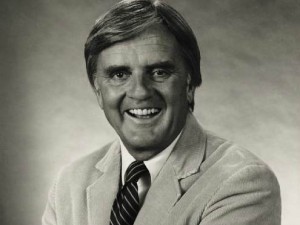
JAMES DELMONICO, 91, WGY/WRGB GM, Broadcasters Pioneers president (Jan. 21)
STEVE FITZ, 84, Albany talk host (Jan. 22)
ANDY MUSSER, 74, former Eagles/76ers play-by-play (Jan. 22)
JIM BROKAW, 85, “Jim Dixon” on WCOP, WNAC (Feb. 5)
DAVE MAYNARD, 82, legendary WBZ morning man (Feb. 10)
CARLOS DeJESUS, WKTU disco DJ (Feb. 13)
GARY GIRARD, 68, longtime Connecticut broadcaster (Feb. 22)
Judge SHERWOOD TARLOW, 87, WHIL Medford, WARE, WLOB owner (Feb. 26)
GORDON MANUEL, 66, WABI-TV anchor, news director (Feb. 27)
STEVE RIVERS, WZOU, WXKS-FM PD (Mar. 6)
Judge SHERWOOD TARLOW, 87, WHIL Medford, WARE, WLOB owner (Feb. 26)
NORM GAGNON, 73, Boston/NH engineer and broadcast historian (Mar. 8)
JACK DEROUIN, 65, CFRA Ottawa GM (Mar. 10)
JOHN GARABO, 46, former WDSY Pittsburgh morning man (Mar. 16)
ROBIN MILLS-BUMBAUGH (“Kelly Buchanan, “Kelly Knight”), 47, central PA DJ (Mar. 25)
TIM SYMONS, 54, CKPC Brantford newsman (Mar. 26)
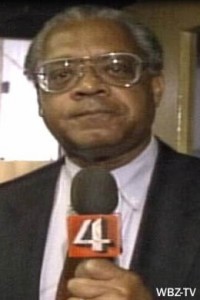
WALT SANDERS, 81, WBZ-TV newsman (April 2)
GIL NOBLE, 80, WABC-TV newsman (April 5)
MIKE WALLACE, 93, CBS News icon (April 7)
STEVE FREDERICKS, 72, Boston, Philadelphia talk host (April 7)
DICK CLARK, 82, Utica DJ who made it big (April 18)
BRIAN CARTER, 56, Philadelphia DJ (April 22)
PAUL HUNSBERGER, 93, six-decade WSNJ announcer, salesman (April 23)
JOHN KATONAH, 50, Catskills broadcaster (April 25)
PETE FORNATALE, 66, WFUV, WNEW-FM legend (April 26)
CARL BEANE, 59, Red Sox announcer (May 9)
APRIL KAUFMAN, 47, NJ talk show host (May 10)
RICK KNIGHT (David Titterington), 59, Glens Falls DJ (May 12)
NEIL McKENTY, 87, priest-turned-CJAD, CFCF talk host (May 12)
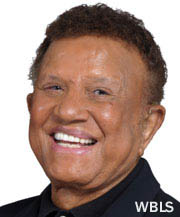
HAL JACKSON, 96, WBLS New York legend (May 23)
RALPH WIETHORN, 82, Pittsburgh announcer (May 25)
PAUL RESNIK, 63, Connecticut DJ (May 27)
LOVELL DYETT, 77, WBZ talk host (May 29)
KEVIN OHL, 51, Vermont DJ, producer (May 29)
DAVID “Dave Neal” GOMBERG, 86, Philadelphia newsman (May 30)
PAUL BARTISHEVICH, 53, Ithaca radio producer (June 1)
LEONARD KAHN, 86, AM stereo inventor (June 3)
MERRILL “Bud” FINCH, 95, Connecticut announcer, talk host, bandleader (June 4)
PAT EVANS, 55, former WXRK New York PD (June 13)
LEIF JENSEN, 86, Boston radio announcer (June 24)
GEORGE St. ANDRE, 86, WHDH, WBZ-TV engineer (June 28)
RON STRATTON, 72, former WBEC Pittsfield GM (June 29)
TED ATKINS, 79, WTAE/WHTX Pittsburgh GM (July 19)
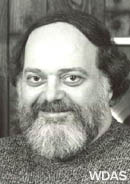
JOE “Butterball” TAMBURRO, 70, WDAS Philadelphia institution (July 27)
AL BRADY LAW, 67, jock and PD in Boston, NYC (July 30)
SAUNDRA SMOKES, 57, newspaper reporter turned WHEN Syracuse host (Aug. 6)
PETER STRAUS, 89, WMCA owner (Aug. 6)
DON ROBERTS, 85, Binghamton/NJ station manager, broker (July 23)
TIGHE JENSEN, 53, voiceover artist (July 13)
ALEX LAMUTIS, 92, WBBF Rochester newsman (Aug. 11)
DONALD “Don Moline” MOLINELLI, 68, WBIS Connecticut PD (Aug. 16)
“Father” THOM MORRERA, 66, WNEW-FM music director (Aug. 18)
ALBERT “Bud” WERTHEIMER, Lincoln Group owner (Aug. 23)
CHRIS NADLER, 53, WQHT New York webmaster (Aug. 24)
JOHN BATTISON, 96, SBE founding president, built WJZ-TV New York (Aug. 28)

DAVE MacNEILL, 80, longtime WCRB announcer (Aug. 28)
JACK NASH (John Naszcyniek Jr.), 59, Mass. DJ, salesman (Sept. 5)
Dr. CHUCK CRANE (“Dr. Christopher Reed”), 58, Z100, WYNY NYC (Sept. 27)
STEVE CHURCH, 57, Telos founder, former WBUF chief engineer (Sept. 28)
BOB VERNON “with a V”, 70, WNBC jock (Sept. 30)
JAMES McQUADE, longtime CBS Radio manager (Oct. 4)
CARL PROPER, 74, WETM Elmira anchor (Oct. 6)
WAYNE K. BROWN, 55, WCBS sales manager, Radio One exec (Oct. 6)
RUSS “Weird Beard” KNIGHT, 80, former WNEW PD (Oct. 12)
JOSEPH ROSENMILLER, 87, Greater Media founder (Oct. 14)
JEROME “Jerry Carr” KARPF, Jr., 93, WHLI Long Island PD (October)
ANDY HOPKINS, 69, WPEN middayer (October)
“Commander” JIM CLARKE, 59, WRKI Connecticut DJ (Oct. 17)
LARRY BLOCH, 59, WVEW-LP Brattleboro founder (Oct. 28)
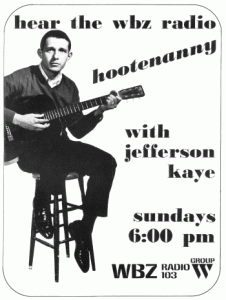 ART CARLSON, 82, Susqehanna Radio exec (Nov. 3)
ART CARLSON, 82, Susqehanna Radio exec (Nov. 3)
GENEROSA AIELLO, 100, WBZ overnight caller (Nov. 5)
CHARLIE TENAN, 81, Bangor TV music host (Nov. 8)
“Big” JOHN GILLIS, 64, WVBF programmer (Nov. 9)
JULES COHEN, 95, consulting engineer (Nov. 15)
JEFFERSON KAYE (Martin Krimski), 75, WBZ, WKBW, WBEN DJ, programmer (Nov. 16)
CHARLIE BROWN, 57, Hartford engineer (Nov. 15)
ART GINSBURG, 81, TV’s “Mr. Food” (Nov. 21)
KATHY COULOMBE, 56, Montreal radio news anchor (Nov. 30)
DON DECKER, 79, Albany newsman (Dec. 3)
ARNOLD DEAN, 82, WTIC sports icon (Dec. 8)
PRESTON GILMORE, 89, WATR Waterbury owner (Dec. 10)
DENNIS EBERLY, 65, Lancaster engineer (Dec. 10)
TOM “Tom Jay” JAWORSKI, 70, WSBS Great Barringon news director (Dec. 12)
LAURIER LaPIERRE, 83, CBC broadcaster turned Canadian senator (Dec. 16)
PAUL STEUBER, 67, veteran news director at WNEP, elsewhere (Dec. 25)
[/private]
 *Good news, everybody! A new shipment of the 2013 Tower Site Calendar is back from the printer, and on its way out to YOU!
*Good news, everybody! A new shipment of the 2013 Tower Site Calendar is back from the printer, and on its way out to YOU!
This is the 12th edition of our annual calendar, which features photos of broadcast towers taken by Scott Fybush on his travels.
The 12-month wall calendar boasts a full-color photo each month of a well-known broadcast transmitter site.
This year’s edition includes sites in Florida, Wisconsin, Kentucky, California, Iowa, Idaho, Las Vegas, Colorado, Boston, Cleveland, Albuquerque, upstate New York and western Massachusetts. We’ve also redesigned the calendar to make it more colorful (don’t worry; the pictures are still pristine) and make the spiral binding our standard binding — your calendar will hang even better on your wall now! And of course, we still have the convenient hole for hanging.
Order 20 or more for a 10% discount! And while you’re at the Fybush.com store, check out the new National Radio Club AM Log and the final stash of FM Atlas editions.
For more information and to order yours, click here!
In this week’s issue… Remembering Pittsburgh's Quinn - Seven Mountains enters Harrisburg - My launches new brands - Ryan out at B101 - More cuts at Radio Vermont - Another AM deleted
Tower Site goes Jeeping (and fixing a flat tire!) up in the mountains of northwest New Jersey
In this week’s issue… New signal for Boston's WJIB - "New Standards" changes stations - New home for Maine FM - Remembering NYC's Diaz, Maine's "Mr. Mike," Albany's McGrath, Rochester's Petschke
A look at two of the Voice of America facilities that were abruptly shuttered this month